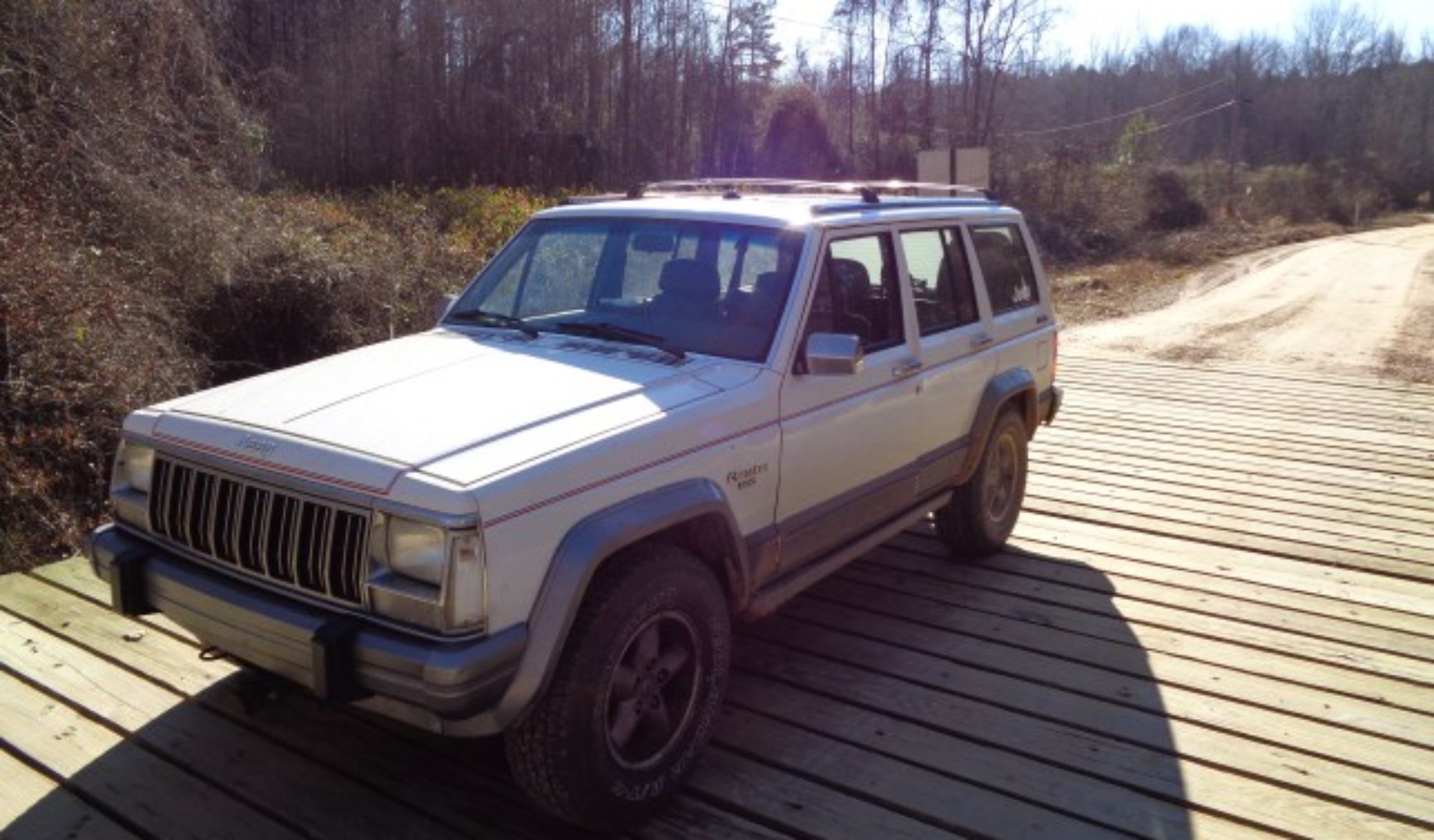Exhaust Manifold Replacement Jeep Cherokee
After removing the old manifold and finding it too broken to repair, I ordered another one form my parts supplier Crown Automotive. I get great service from Crown and they supply quality parts. Their parts are near duplicates of the original Jeep parts and I can order with the Jeep part number.
I received my boxes early in the morning. However, one of the boxes was crushed. The box with the gasket was damaged as were the main manifold gasket and the air filter I had ordered. The doughnut gasket was fine as were some of the other parts in the box. I returned the damaged parts.
I compared the manifold to the original just to make sure it looked the same. It seemed well made but with some kinda sloppy welds. Just like the original.
I began by installing the EGR pipe in the new manifold. I had to heat the old manifold to get the EGR pipe out and the fitting at the end still did not want to swivel. I screwed it in the manifold and lined it up with where it would need to point to attach to the intake.
I cleaned off the head using a Scotch Brite wheel mounted in my drill. Luckily I had a spare gasket so I installed that. I then mounted the new manifold. It is way easier to get to the mounting bolts with the intake out of the way.

I then cleaned up the manifold mounting surface and sat it in place. Since it is very hard to get the bottom manifold bolts started, I tried setting them in place and loose hoping I could slip the manifold in behind the thick washers. I forgot about the dowels that the manifold has to slip over. So, I had to pull the manifold back out and pull the bolts.
Once the manifold was seated into place, I began the tedious task of getting all the bolts lined up and started into their threaded holes. The ones on the bottom were very hard for me. Once I finally got them all in I remembered to finish hooking up the EGR line. I had slipped the tube into the hole as I set the manifold in place but not started the nut.
I tried every possible angle and I could not get the nut to start. It would go in a thread or so and then pop back out. I tried from above and below. The tube looked aligned but it was obviously just a hair off. And with it seized in the exhaust I could not move it much to try to align it.
After struggling for an hour or so, I gave up and pulled both manifold back out. I found I could easily thread the pipe in with the manifold laying on the floor. I hoped that if the exhaust end freed up that I could attach it in place in the truck. So, I heated the nut cherry read and sprayed AFT on it until I could spin it around on the tube. I bolted the exhaust back in place and tried again. I tried it with the nut started in the intake but then it would not thread in the exhaust. I tried it with the nut started I the exhaust and it would not start in the intake. I wiggled the intake around every way I could but I could never get the nut to start.
So I took both manifolds off again. While I had the exhaust out this time I decided to remove the air warming tube because I don’t use it and it is really in the way for getting to the bottom bolts. I laid the manifolds on the floor and hooked up both tubes. I tightened the nuts almost snug but where the tube would still move a bit.
I then set the entire assembly in place as a unit just like I had taken it out. Putting the back nut on the exhaust mounting stud was a real struggle that involved some yelling and throwing wrenches before I finally worked my hand into the correct position. Eventually I was able to get all the bolts started into their threaded holes. I snugged up the EGR tube nuts and hooked up the down pipe to the new manifold.
I was tired and sore by that time so I called it a night and I will finish tightening the bolts later. Then I will have to hook back up all the vacuum and electrical connectors.
[phpbay]jeep exhaust manifold, 10[/phpbay]



